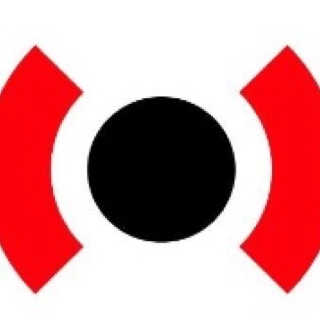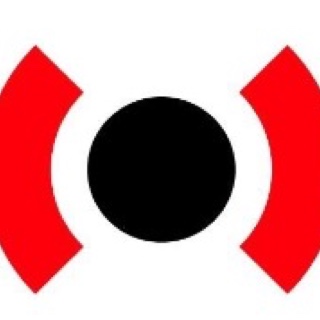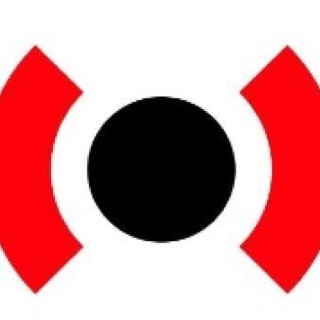Information
-
Audit Title
-
Client / Site
-
Conducted on
-
Prepared by
-
Location
-
Personnel
1. Working at Heights
-
1.1. Fall risks of 6 feet or more? (including voids, pits, and trenches)
-
1.2. Lack of edge protection?
-
1.3. Unsafe or incomplete edge protection? If so, is it being corrected or finished immediately?
-
1.4. If using personal fall protection system is there a fall rescue plan? On site?
Harness and Equiipment
-
1.5 - Unsafe or damaged Harness or equipment?
-
1.6 - Incompatable hooks/equipment?
-
1.7 - Unsafe or uncertified anchor points?
-
1.8 - Lack of inspection protocol for equipment?
-
1.9 - Lack of or inadequate formal training for operators?
2. Small Tools and Equipment
-
2.1. Unsafe or damaged small tools or equipment? (including missing or damaged guards)
-
2.2. Incorrect small tools /equipment for job? (e.g. grinding discs for cutting)
-
2.3. Unsafe or incompatible attachments used with small tools /equipment?
-
2.4. Unlicensed operators? (Powder actuated tools)
-
2.5. Lack of safe work instructions?
-
2.6. Lack of training in safe operation, clean-up and maintenance?
-
2.8. Lack of inspection regime?
3. Scaffolds
-
3.1. Unlicensed persons erecting scaffold above 10feet?
-
3.2. Unsafe or incomplete scaffold? If so, is it tagged accordingly?
-
3.3. Lack of inspection protocol for scaffold? Is the scaffold tagged as non use, or have inspection log?
-
3.4. Incompatible scaffold components?
-
3.5. Safe Work Load (SWL) exceeded? (tools, stored materials, number of persons)
4. Lifting Equipment
-
4.1. Unsafe or damaged equipment?
-
4.2. Loads lifted over persons, close proximity to obstacles incl. overhead power lines?
-
4.3. Lack of maintenance, testing and inspection?
-
4.4. Lack of SWL (safe work load)information displayed?
-
4.5. Lack of daily inspection protocol?
-
4.6. Unsafe or damaged lifting equipment, including ropes, slings, chains, hooks?
-
4.7. Unlicensed operators?
-
4.8. Do forklifts have attached fire extinguisher?
-
4.9.Is required PPE available for fuel propane tank change out available? (Utility gloves, face shield, safety glasses)
5. Ladders
-
5.1. Unsafe or damaged ladders?
-
5.2. Unsafe positioning or use of ladders?
-
5.3. Ladder not properly secured?
-
5.4. Ladder unsuitable for job? (e.g. metal ladder used for electrical work)
6. Hazardous Tasks
-
6.1. Lack of identification hazardous tasks?
-
6.2. Lack of assessment of hazardous tasks?
-
6.3. Inadequate risk controls? (examples: no job rotation, lighter loads, trolleys, lifting equipment, etc)
-
6.4. Lack of training in risk controls and safe lifting/ team lifting techniques?
7. Hazardous Chemical (including fuel and oil)
-
7.1. Unsafe storage location? (e.g. flammables near ignition sources, spills could enter stormwater drains, etc)
-
7.2. Incompatible chemicals stored near each other?
-
7.3. Inadequate spill containment equipment?
-
7.4. Safety Data Sheets not accessible on site?
-
7.5. Lack of emergency procedures for injury/spills/fire etc?
-
7.6. Excessive quantities stored on site or in vehicles?
-
7.7. Insufficient ventilation?
-
7.8. Insufficient, or incorrect, PPE?
-
7.9. Unsuitable storage containers? (unlabeled or stored in food containers)
8. Emergency Response
-
8.1. Lack of, or no emergency plans for site?
-
8.2. Emergency procedures not displayed at site?
-
8.3. Lack of, or inadequate first aid kits aid equipment for site?
-
8.4. Are first aid kits inspected monthly to ensure adequately stocked?
-
8.5. Are eye wash bottles within 3year shelf life limit?
-
8.6. Are gravity flow Eyewash stations cleaned/refilled every six months?
9. Traffic Management
-
9.1. Lack of, or inadequate, Traffic Management Plan (TMP) in place?
-
9.2. Lack of training in TMP for all persons on site? <br>(contractors and visitors)
-
9.3. Inadequate controls for TMP? (physical barriers, bollards, speed limits, flashing lights, spotters, etc)
10. Fire prevention
-
10.1. Are fire extinguishers available, not blocked and in good condition?
-
10.2. Have all fire extinguishers on the job site been initialed and dated for monthly inspections?
11. Personal Protective Equipment (PPE)
-
11.1. Lack of, or inadequate PPE (including sun protection), hardhats, eye glasses, safety vests/ colors, long pants, masks, gloves, etc.
-
11.2. Lack of system to issue, inspect, replace and monitor PPE?
-
11.3. Lack of training in safe use, clean-up and inspection of PPE?
12. Work Environment
-
12.1. Lack of/or inadequate amenities? (toilets, wash areas, lunch rooms, etc)
-
12.2. Insufficient lighting?
-
12.3. Inadequate housekeeping? Is the job-site (inside and outside) clean and organized?
-
12.4. Lack of, or inadequate noise/ vibration control?
13. Electrical Hazards
-
13.1. Unsafe electrical leads/ cords? (damaged, out of test date or untested)
-
13.2. Lack of Ground fault protection?
-
13.3. Contact with overhead electrical lines?
-
13.4. Overloading outlets?
-
13.5. Leads placed on ground or on metal structures?
-
13.6. Electrical equipment near water?
-
13.7. Electrical equipment near flammables?
-
13.8. Electrical equipment near chemicals that could cause damage?
-
13.9. Electrical leads that may be damaged from contact with moving machinery parts?
-
13.10. Electrical leads on work surfaces?
-
13.11. Lack of Lock-out/tag-out (LOTO) procedures for electrical equipment?
14. Environmental Hazards
-
14.1. Lack of/or inadequate, dust suppression system?
-
14.2. Lack of/or inadequate systems to prevent contaminants entering stormwater drains?
15. Administrative Procedures
-
15.1. Lack of/or inadequate Site Safety Plan?
-
15.2. Failure to obtain permits? (Council, EPA, WHS, also Hot Works, Confined Space etc)
-
15.3. Lack of, or inadequate, supervisory arrangements? Do you need input and help from your project manager?
-
15.4. Lack of/or inadequate training, licenses, skills, experience? Does anyone on the project need training, licensing, or put on notice?
-
15.5. Lack of/or inadequate Safe Work Method Statements (SWSM) for high- risk work? Have you prepared for and communicated the safety procedures for high risk scopes of work, I.e. steel erection?
-
15.6. Lack of/or inadequate incident notification procedures?
-
15.7. Lack of, or inadequate, routine inspections, monitoring, audits?
16. House keeping
-
16.1. Are aisles free of tripping hazards?
-
16.2. Are aisles free from obstructions such as skids, equipment, shelves?
-
16.3. Are floors clean and free from slippery substances such as water, oil, etc?
-
16.4. Are scrap metal, glass, knife blades deposited in the proper containers?
-
16.5. Are overhead hazards secured properly?
-
16.6. Are all Exits clearly marked?
-
16.7. Do employees promptly secure first aid for all injuries?
-
16.8. Are heavy items stored on lower shelves?
-
16.9. Have items been properly secured to prevent tipping/falling?
-
16.10. Are materials stored or stacked in a safe manner?
-
16.12. Is the OSHA Poster displayed? does everyone on the job site know its location?
-
16.13. Is the SDS(Safety data sheet) book complete with all chemicals on job site secured? Also does everyone know its location?
17. Ask 3 people these questions
Person #1
-
17.1. Do you know how to contact immediate supervisor/Project manager in case of emergency?
-
17.2. Do you know who is the trained first aid/CPR person on site?
-
Add signature
-
17.3. Do you know how to contact immediate supervisor/Project manager in case of emergency?
-
17.4. Do you know who is the trained first aid/CPR person on site?
-
Add signature
-
17.5. Do you know how to contact immediate supervisor/Project manager in case of emergency?
-
17.6. Do you know who is the trained first aid/CPR person on site?
-
Add signature
Corrective Actions
-
Enter any corrective actions that will be undertaken. Take pictures of some of the safe and at-risk items as part of this report.
Sign Off
-
Name of anyone onsite that was notified of unsafe work practices as part of this audit.
-
Auditor's signature








